 Bennett Mechanical Comprehension Test Free Practice Questions
Bennett Mechanical Comprehension Test Free Practice Questions
This free Bennett Mechanical Comprehension practice test is designed to mirror the types of questions you’ll encounter on the actual Bennett Mechanical Comprehension Aptitude Test.
Each sample question has been carefully selected from our comprehensive Bennett Mechanical Comprehension practice pack to help you boost your score and excel in your pre-employment assessment.
Looking for additional practice? JobTestPrep offers complete PrepPacks (both for the UK and the United States) that include everything you need to succeed on your test, featuring detailed step-by-step explanations and realistic, test-like practice questions. Choose your PrepPack and start practicing.
Bennett Mechanical Comprehension Test Free Sample Questions and Answers
Below are 5 sample questions and answers, one of each category, all adapted from the actual Bennett Mechanical Aptitude Test:
Sample Question 1 - Velocity
This is the broadest area of the Bennett test, covering around 28% of the 55 test questions. Topics include acceleration and inertia, gravity, the center of gravity, etc.
1. In which direction is the wagon moving faster?
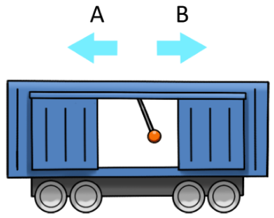
Answer:
The pendulum swings backward because the car is accelerating in the opposite direction. This is similar to how you feel pushed back when a car speeds up or pulled forward when it slows down.
Remember: When an object is in an accelerating system (e.g., a car that speeds up or slows down), the force acting on the object inside will be in the opposite direction of the system’s acceleration.
The correct answer is A.
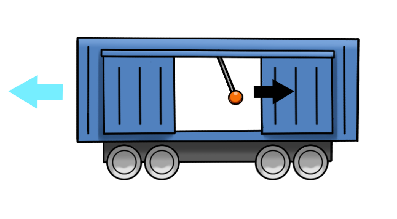
Note: Deceleration is considered a backward acceleration.
Sample Question 2 - Force and Torque
A broad and commonly featured topic (comprising 12-13 questions (23%) on the actual exam) involves concepts such as force resolution, centrifugal force, and the law of the lever.
2. Which way should the acrobat shift to balance the seesaw?
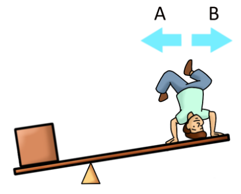
Answer:
A seesaw is a first-class lever, with the fulcrum placed between the effort and the load. To balance the seesaw, the acrobat needs to increase their torque. Since their weight doesn't change, the only way to increase torque is by moving farther from the fulcrum.
By moving in direction B, the acrobat shifts their center of gravity farther from the fulcrum, creating more torque and balancing the seesaw.
The correct answer is B.
Sample Question 3 - Fluids
This section will cover fundamental fluid concepts, including the ideal gas law, basic hydraulics, and Bernoulli's principle. Approximately 8-9 questions on the test (15%) will focus on these topics.
3. Which of these three diagrams is correct?
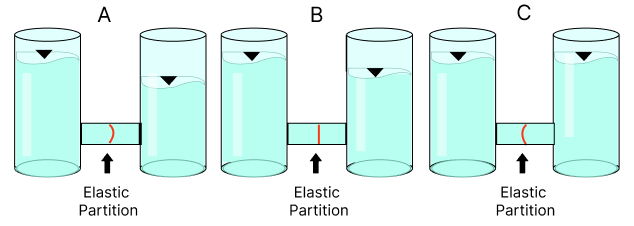
Answer:
The partition bends due to the pressure difference between its sides, which is determined by the water level in each container. Higher water levels create higher pressure.
- In A, the partition bends to the right, indicating higher pressure on the left side, which matches the higher water level there. This is correct.
- In B, the partition is flat, showing no pressure difference, even though the water levels are different. This makes B incorrect.
- In C, the partition bends to the left, suggesting higher pressure on the right side, which contradicts the higher water level on the left side. This makes C incorrect.
Key principle: Higher water level means higher pressure.
Correct answer: A.
Looking for additional practice? JobTestPrep offers complete PrepPacks (both for the UK and the United States) that include everything you need to succeed on your test, featuring detailed step-by-step explanations and realistic, test-like practice questions. Choose your PrepPack and start practicing.
Sample Question 4 - Pulleys
Pulley questions on the BMCT test are usually more common than in other tests (4-5 questions - 8%), so it is important to go over the basic rules of this mechanism. Pulley questions will normally ask you to determine which of the two pulley systems is more efficient.
4. Who will need to apply more force to lift the weight? (If equal, Mark C.)
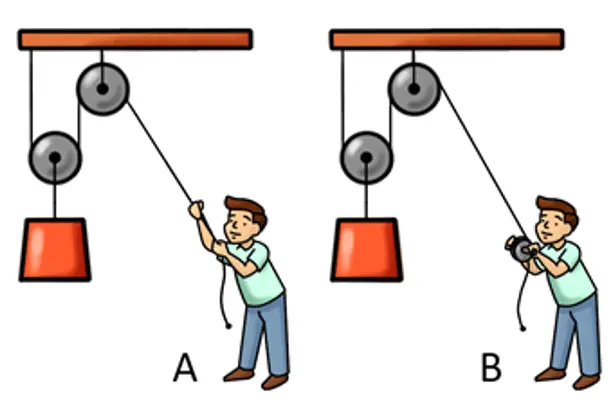
Answer:
Figure B has an additional wheel to reel in the rope, so 3 wheels total, while figure A only contains 2 wheels.
However, this extra wheel does nothing to divide the force and only changes the pulling from a linear motion in A to a circular motion in B.
Remember the physical principle: In a pulley system, the wheels that reduce the applied force are moving wheels, not wheels that only change the motion’s direction.
Sample Question 5 - Thermodynamics (Heat)
This topic focuses on the basics of heat transfer – most commonly heating, cooling, condensation, and evaporation.
5. In which direction will the pressure gauge move if the closed oxygen canister is heated? (If neither, mark C.)
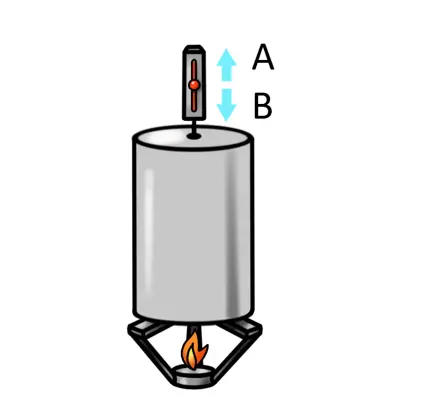
Answer:
TL;DR: Heated gas expands. If it cannot expand, its pressure rises.
And now for a more elaborate explanation:
The answer to the question relies on the Ideal Gas Law:
PV=nRT
Where P =pressure, V = volume, n = number of moles of gas (amount of gas), R = Gas constant (property of the material), T = temperature.
When the temperature (T) rises, the right side of the equation increases, while n and R remain constant (the amount of gas and the material itself are unchanged). Therefore, to maintain the equation, its other side must increase. Since the volume is fixed, the only option is for the pressure to increase.
The correct answer is A.
Answer Index
| 1 | 2 | 3 | 4 | 5 |
| A | B | A | Non | A |
Continue Practicing for the Bennett Mechanical Comprehension Exam
Access more Bennett Mechanical Comprehension practice tests and other valuable Bennett Mechanical Comprehension prep materials so that you take the test while being as prepared as possible:
- The Definitive Mechanical Aptitude Test All-Inclusive PrepPack™ - Includes 21 mechanical and electrical aptitude practice tests, 12 spatial reasoning tests, and 6 Ramsay Institute-style practice tests.
- Bennett Mechanical Comprehension Prep - This prep Practice Full BMCT-II and 2 Full BMCT-I and 21 more Mechanical Aptitude Practice Tests.
Ace Your Job Search with a Custom Prep Kit
Job hunting doesn't have to be stressful.
Prepare smarter and ace your interviews faster with our Premium Membership.






